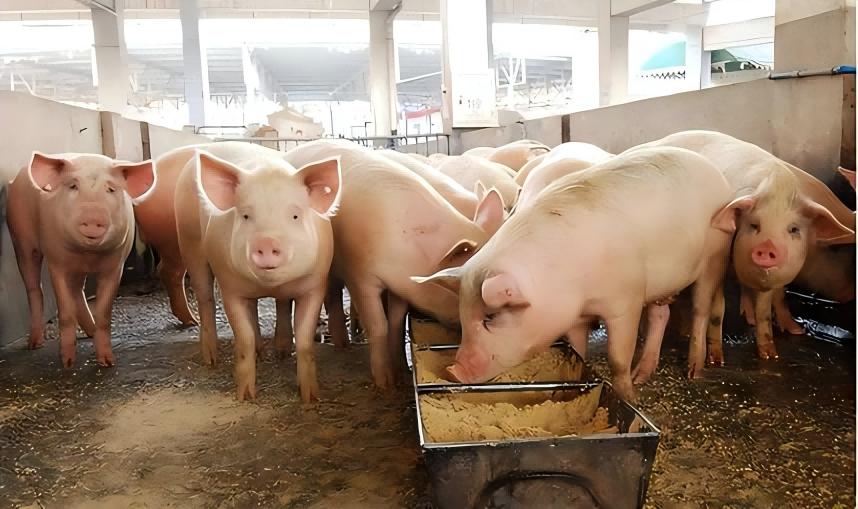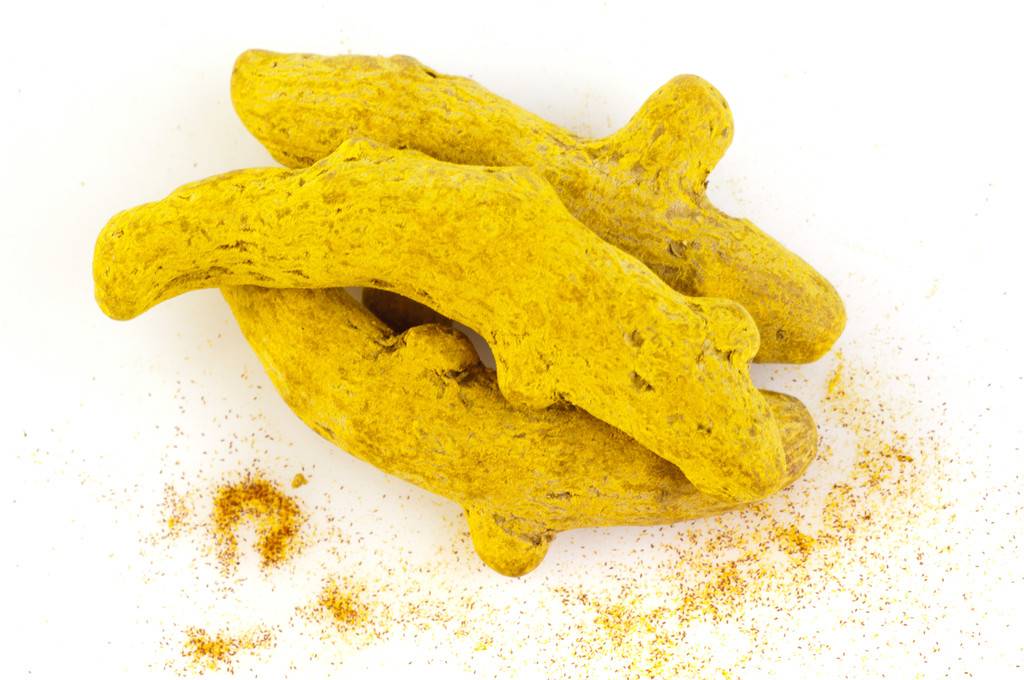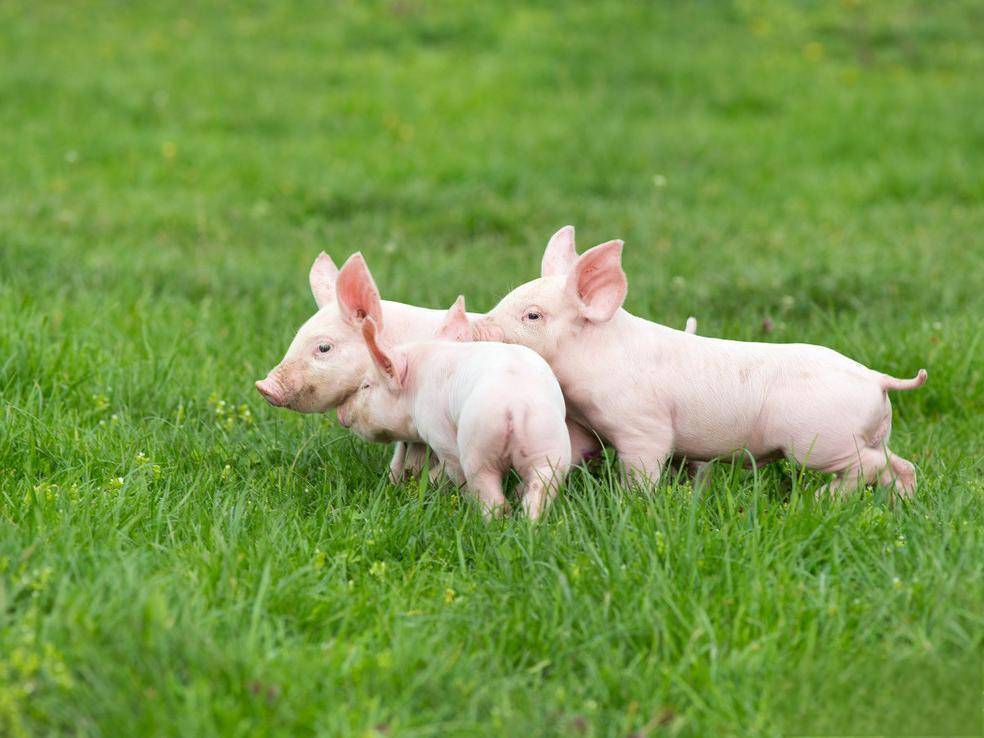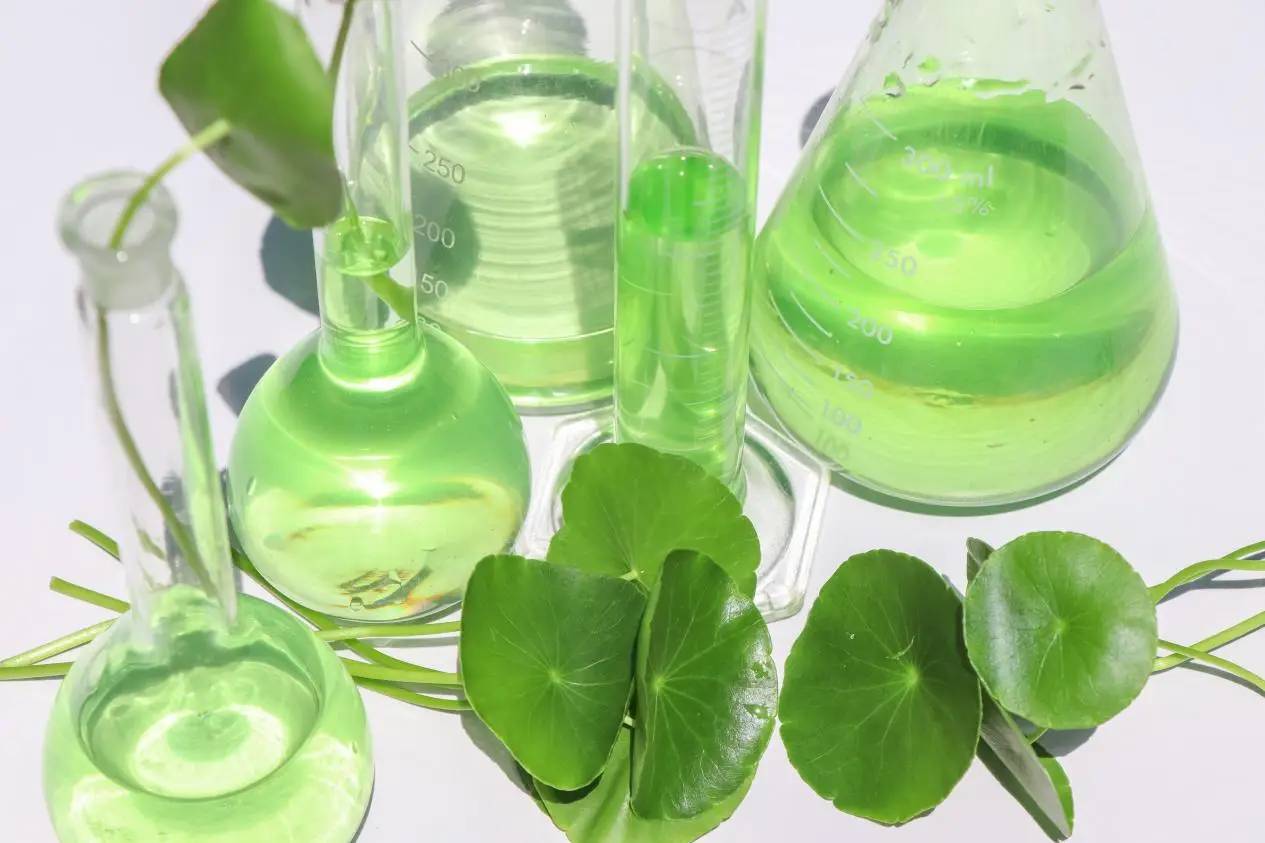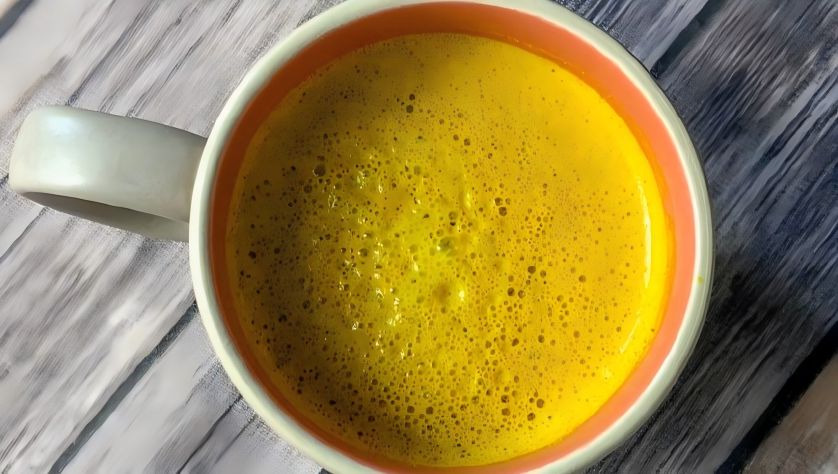What Is the Use of Turmeric Powder in Kannada?
Turmeric is a tropical herb in the ginger family, native to South Asia. Turmeric has been used for centuries as a food additive and dye, especially in India, China and other Southeast Asian countries [1]. In traditional Ayurvedic medicine, turmeric has a long history of use to treat wounds, skin diseases, eye infections, respiratory diseases and digestive diseases, and it acts as a “blood purifier” [2]. Its main medicinal active ingredients are curcuminoid compounds, including curcumin, demethoxycurcumin and bisdemethoxycurcumin, the proportions of which depend on the geographical conditions under which turmeric grows. Curcumin is the most important active ingredient, accounting for about 80% of the curcuminoids. The proportions of demethoxycurcumin and bisdemethoxycurcumin are about 17% and 3%, respectively. In 1993, circumcurcumin was also discovered [3].
As research into turmeric has progressed, a variety of trace curcuminoids have gradually been discovered, and they also have good biological activity [4]. Turmeric extract is a natural plant extract with active chemical properties and a wide range of physiological activities. It has good anti-inflammatory, antibacterial and antioxidant properties.
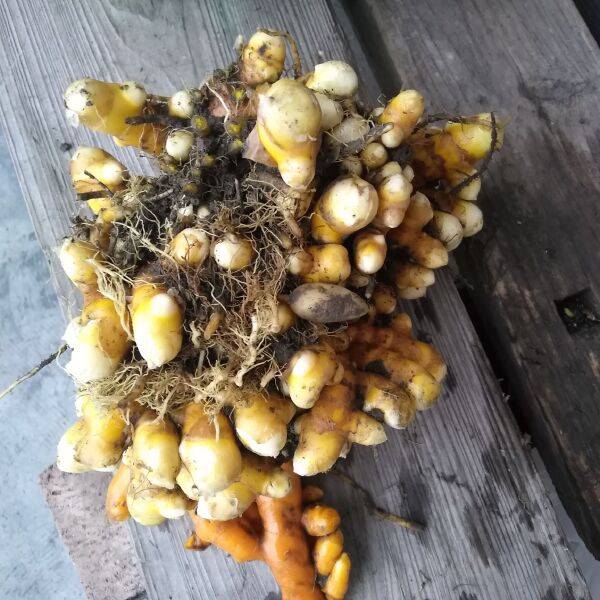
1. Physicochemical properties of curcumin
Curcumin is a polyphenolic compound with a diketone structure. Its molecular formula is C21H20O6 and molecular weight is 368.39 u. Its chemical structural formula is shown in Figure 1. It contains a special 1,7-diaroylheptane skeleton, consisting of a β-diketone and two o-methylated phenols. Because the curcumin molecule contains multiple active groups such as phenolic hydroxyl groups, carbonyl groups and double bonds, it is also relatively chemically reactive. The presence of two hydroxyl groups at the ends of the curcumin molecule makes the molecule prone to conjugation effects that cause electron cloud deviation under alkaline conditions. This results in a ketene-enol tautomerism of the diketone structure. Under alkaline conditions, it mainly exists in a stable enol form and appears reddish-brown in color, while in acidic and neutral environments it mainly exists in a ketone form and appears bright yellow. Therefore, it can be used as a chemical acid-base indicator.
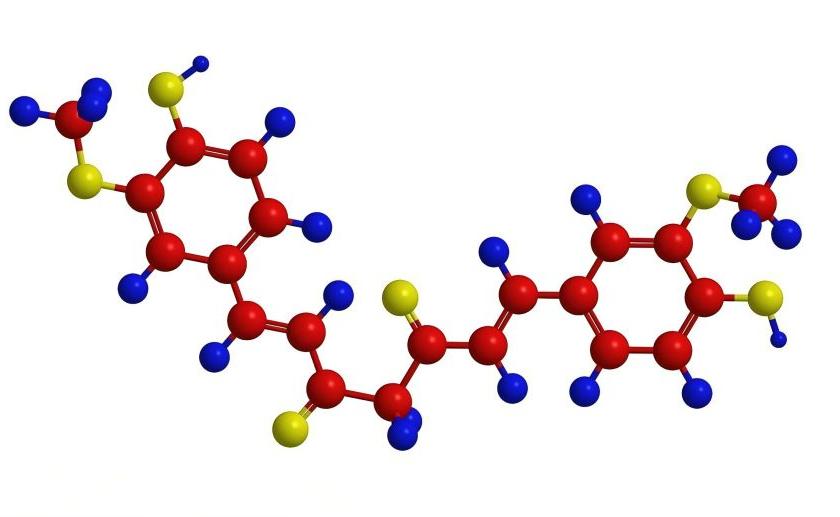
Curcumin can be reduced to dihydro-, tetrahydro-, hexahydro- and octahydrocurcumin in the body, as shown in Figure 2.
Turmeric extract is an orange-yellow crystalline powder that is soluble in organic solvents such as methanol, ethanol, and acetone, and is easily soluble in glacial acetic acid and alkali solutions. However, its solubility in water is very poor [5], only 1–10 μg/mL. It is highly pigmented and generally does not fade easily after coloring. It is often used as a food coloring agent and is one of the nine natural pigments approved for use in food.
Turmeric extract has poor stability. As a highly photosensitive substance, turmeric extract can degrade by 68.9% after 5 days of exposure to outdoor light[6]. Therefore, it should be stored away from light. It also has poor thermal stability. When heated above 70°C, the structure of turmeric extract begins to break down. Boiling water for 20 minutes can cause a 30% loss of turmeric extract[7]. Curcumin molecules are also difficult to exist stably under strong acid and alkali conditions, especially under alkaline conditions, which are more likely to decompose [8], producing substances such as vanillic acid, vanillin, and ferulic acid. Curcumin molecules are also sensitive to metal ions such as Fe2+, Fe3+, and Al3+, and can chelate with them [9] to reduce the toxic effects of metals. The special chemical structure of curcumin determines its active chemical properties and also gives it a rich physiological activity.
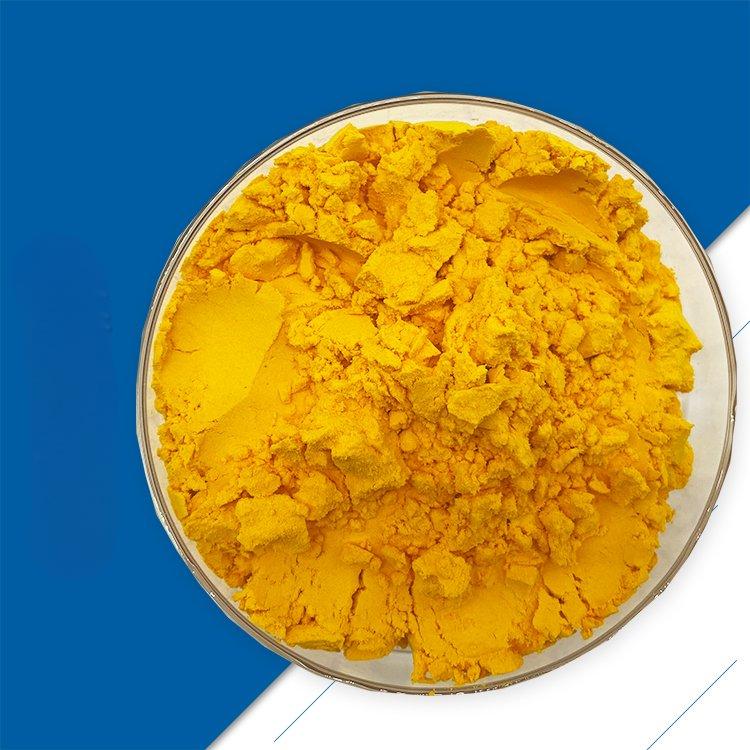
2 Physiological activity and mechanism of curcumin
2.1 Antioxidant effect
Oxidative stress can affect the formation and early development of livestock and poultry embryos[10], reduce animal immunity, and cause a decline in the quality of livestock products[11], and has become one of the key factors affecting the healthy breeding of livestock and poultry. Curcumin has strong antioxidant activity, comparable to that of vitamins E and C. The active functional groups of curcumin can be oxidized by electron transfer and hydrogen extraction processes, and its antioxidant activity is mainly determined by the methylene hydrogen and o-methoxyphenolic groups. In addition, the β-diketone group in its molecule can chelate transition metal ions such as Fe3+ and Cd2+, reducing the oxidative stress they induce. Moreover, metal complexes bound to certain metal ions such as Cu2+ also exhibit antioxidant enzyme-like activity [12].
In living organisms, oxygen can be reduced by single electrons to form chemically active substances – reactive oxygen species (ROS), including superoxide anion radicals, hydroxyl radicals, and hydrogen peroxide. These free radicals, which have a very short half-life, can react with proteins, DNA and unsaturated fatty acids, causing oxidative DNA damage and lipid peroxidation, which in turn leads to oxidative damage in living organisms [13]. Curcumin is an effective scavenger of reactive oxygen species and can scavenge various free radicals such as superoxide anion radicals and hydroxyl radicals. Reddy et al. [14] found that curcumin can scavenge uric acid-derived superoxide anions produced by the xanthine oxidase system and hydroxyl radicals produced by the degradation of deoxyribose and hydroxylation of salicylic acid, and can significantly reduce the content of lipid peroxides in the liver and serum of rats. In addition, Unnikrishnan et al. [15] found that curcumin can scavenge nitrogen-centered free radicals such as 1,1-diphenyl-2-trinitrophenylhydrazine (DPPH·) and has a significant inhibitory effect on nitrogen dioxide-induced hemoglobin oxidation.
Curcumin can effectively reduce oxidative stress caused by malondialdehyde, protein carbonyls, nitrotyrosine and thiols, and relieves lipid and protein oxidation. In addition, it can also increase the activity of antioxidant enzymes such as superoxide dismutase (SOD) and glutathione peroxidase (GSH-Px)[16]. The antioxidant properties of curcumin can also be mediated by activating nuclear factor E2-related factor 2 (Nrf2), a transcription factor that regulates the expression of antioxidant genes and plays a key role in maintaining the redox state of cells [16]. Cohly et al. [17] also found that curcumin can reduce oxidative damage to cells by inhibiting lipid degradation and lipid peroxidation. Therefore, curcumin has the potential to resist oxidative stress in livestock farming.
2.2 Anti-inflammatory effect
After livestock and poultry develop an inflammatory response, local tissue damage occurs, bodily functions decline, and production levels decrease. Curcumin has a good anti-inflammatory effect, and its natural anti-inflammatory activity can even rival that of non-steroidal anti-inflammatory drugs such as indomethacin and phenylbutazone, without causing toxic side effects. Cyclooxygenase-2 (COX-2), lipoxygenase (LOX) and inducible nitric oxide synthase (iNOS) are enzymes involved in inflammatory responses. Curcumin can effectively inhibit the expression of these enzymes in the body and reduce their activity, thereby reducing the body's inflammatory response [18].
Nuclear factor-κB (NF-κB) is one of the most common eukaryotic transcription factors, and can regulate processes such as cell proliferation and growth, and inflammatory responses. IKK (inhibitor of nuclear factor kappa-B kinase) is a protein complex with a relative molecular mass of 700-900 ku. IKK is the most critical kinase in the regulation of immune and inflammatory response gene expression by NF-κB. Its phosphorylation is an important step in activating the NF-κB system [19]. Curcumin can reduce the content of phosphorylated IKK, inhibit the activation of constitutive and induced NF-κB, and ultimately prevent the translocation of NF-κB to the nucleus [19].
Hasanzadeh et al. [20] also found that curcumin can inhibit the aggregation of NLRP3 inflammasome subunits by inhibiting the NF-κB signaling pathway, thereby interrupting the maturation and release of interleukin-1β (IL-1β) and thus inhibiting the inflammatory response. Tumor necrosis factor-α (TNF-α) is an important cytokine that can mediate the natural immune response and inflammation response to directly kill tumor cells. Its pro-inflammatory effect is mainly due to its ability to activate the NF-κB signaling pathway, which in turn leads to the expression of inflammatory genes such as COX-2, LOX, iNOS and inflammatory factors. Studies have shown that TNF mRNA is constitutively expressed in the mantle cell lymphoma (MCL) cell line, and curcumin can inhibit the expression of TNF mRNA and protein levels in the MCL cell line, thereby inhibiting the inflammatory response [18]. These mechanisms of action of curcumin make it have good application potential in the treatment of inflammation in livestock and poultry.
2.3 Antibacterial effect
During animal production, livestock and poultry are exposed to a large number of pathogenic bacteria. Curcumin has broad-spectrum antibacterial activity, and it has a strong inhibitory effect on a variety of gram-positive and gram-negative bacteria, and can kill a variety of pathogenic bacteria such as Streptococcus mutans, Escherichia coli, Staphylococcus aureus, Staphylococcus epidermidis and Enterococcus [21]. Curcumin can inhibit the quorum-sensing system (QS) of bacteria, inhibit the formation of bacterial biofilms, and change the localization of membrane-associated proteins, disrupt the integrity of bacterial membranes, and increase the permeability of bacterial cell membranes [22]. At the genetic level, curcumin can interact with bacterial DNA molecules, downregulate the expression of bacterial virulence genes, and inhibit bacterial DNA damage response [23]. Curcumin can also inhibit cell division by binding to microtubulin and interfering with protein synthesis [24].
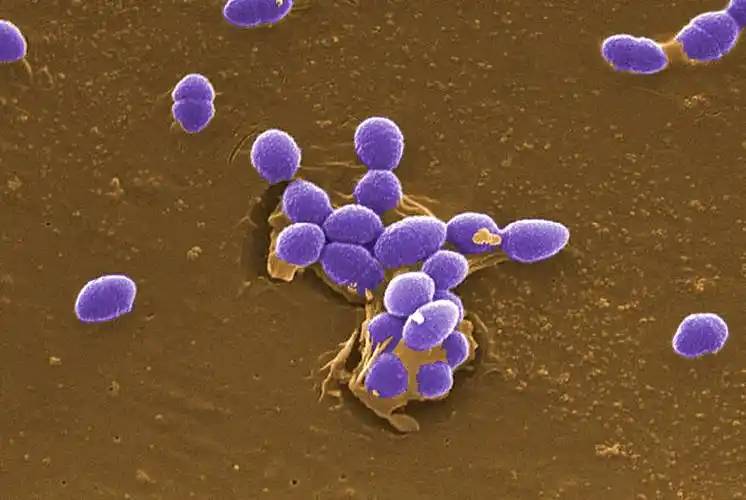
Mun et al. [25] found that curcumin not only has bacteriostatic activity against multiple strains of methicillin-resistant Staphylococcus aureus (MRSA), but also has a synergistic effect with benzylpenicillin, ampicillin, ciprofloxacin and norfloxacin, and reduce their minimum inhibitory concentrations. Marathe et al. [26] found that curcumin can effectively inhibit the escape of intracellular pathogens and enhance the fusion of lysosomes, thereby reducing the spread of pathogens between cells. Therefore, curcumin has great potential in inhibiting pathogens and maintaining the healthy growth of livestock and poultry.
2.4 Other physiological activities
Curcumin also has a variety of physiological effects, including anti-cancer, preventing and treating diabetes, protecting the cardiovascular system and treating neurodegenerative diseases. Curcumin's anti-cancer properties are related to its ability to induce cell cycle arrest and inhibit the proliferation and metastasis of cancer cells. Curcumin can regulate the expression level of miRNAs, trigger apoptosis and autophagy pathways in cancer cells [27]. In terms of treating diabetes, studies in various animal models such as rats have shown that curcumin can effectively prevent and treat diabetes by lowering blood sugar, improving the function of pancreatic β cells, preventing pancreatic β cell death, inhibiting insulin resistance, and preventing the harmful complications of diabetes [28].
In terms of cardiovascular diseases, curcumin can treat cardiovascular diseases such as cardiac hypertrophy, cardiac fibrosis and ischemia by regulating signal pathways such as AMPK, NF-κB, PI3k/Akt, MAPK and PPARs[29]. Curcumin can also have a beneficial effect on brain health through various mechanisms, such as antioxidant activity, binding to β-amyloid, inhibiting the overphosphorylation of microtubule-associated protein tau, and promoting synapse formation, to treat neurodegenerative diseases such as Alzheimer's disease [30]. In addition, curcumin also shows excellent application prospects in protecting the kidneys, treating AIDS, and preventing autoimmune diseases [18].
3. Application in animal production
With the continuous improvement of people's living standards, the quality of livestock products is becoming increasingly important. The focus of research has also begun to shift from increasing livestock production to improving nutritional control methods and improving the quality and safety of livestock products. Factors such as oxidative stress and inflammation can seriously affect animal health in animal production, causing adverse consequences such as reproductive disorders in breeding animals, increased morbidity, decreased quality of livestock products and increased mortality [31]. The wide range of medical uses and health-promoting functions of curcumin can play an important role in maintaining the health of animal bodies, and it has broad application prospects in the healthy breeding of animals. With the deepening of research on curcumin, people have begun to use curcumin, which is widely physiologically active, green and safe, in animal production.
3.1 Application in pig production
Weaning stress can seriously affect piglet feed intake and digestion, causing growth retardation and even disease and death. Maneewan et al. [32] reported that adding 0.1% and 0.2% curcumin to the diet of nursery pigs can improve the digestibility of nutrients, blood parameters and intestinal health. Adding 400 mg/kg curcumin to piglets' diets can enhance their growth performance, maintain the integrity of the jejunal mucosal barrier, and stimulate the immune system of weaned piglets [33]. Recharla et al. [34] added turmeric powder to the diets of weaned piglets. After 6 weeks, the piglets' final body weight increased, the abundance of lactic acid bacteria in the intestine increased, and the concentration of short-chain fatty acids in the feces increased, suggesting that curcumin can act as a growth promoter. Curcumin can also alleviate the symptoms of slow postnatal development in pigs with intrauterine growth retardation and enhance their immune function [35].
Moniruzzaman et al. [35] showed that a combination of curcumin and resveratrol can regulate the intestinal microflora of weaned piglets, downregulate the expression level of Toll-like receptor mRNA, and reduce intestinal disorders and improve piglet immunity by secreting immunoglobulins. Curcumin can also be used in combination with vaccines to increase their efficacy. Yu Jianguo et al. [36] used a porcine circovirus type 2 inactivated vaccine in combination with curcumin, which increased the piglets' immune levels against porcine circovirus type 2. Within a certain dose range, an increase in curcumin concentration is beneficial to the enhancement of piglets' immune capacity.
Zhao Chunping et al. [37] used Escherichia coli to attack weaned piglets, and found that after adding curcumin to the diet, the activity of glutathione peroxidase, catalase, and superoxide dismutase in the serum of weaned piglets was significantly increased, and the total antioxidant capacity was significantly increased. The content of malondialdehyde was significantly reduced, which indicates that adding curcumin to the diet can improve the antioxidant properties of piglets. Therefore, curcumin can improve the immune function of piglets, maintain intestinal health, improve antioxidant properties, and promote healthy growth of piglets, and has good application prospects.
3.2 Application in poultry production
In the poultry industry, high-density feeding models often lead to poor hygiene conditions and delayed growth of poultry. In order to improve production efficiency, antibiotics are widely used to promote growth and maintain health, which has led to the abuse of antibiotics and antimicrobial substances. The use of phytogenic compounds such as curcumin can reduce the poultry industry's dependence on antibiotics and improve production levels. It can improve the disease resistance of poultry, improve poultry production performance, and improve meat product quality.
Necrotic enteritis is one of the most important infectious diseases in the poultry industry, mainly causing necrosis of the intestinal mucosa of poultry, which has caused huge economic losses in the poultry industry. Lee et al. [38] showed that Adding turmeric and chili oil to the diet of commercial broilers can increase their weight, reduce the mRNA levels of the inflammatory cytokines IL-8, IL-17, and IL-17F in the intestine, and reduce the serum content of Clostridium perfringens toxins, thereby alleviating intestinal damage. This result shows that adding curcumin to the broiler diet can improve the resistance of broilers to necrotizing enteritis. Hussein et al. [39] showed that a curcumin powder addition of 7 g/kg to the broiler diet significantly increased the body weight, feed intake and feed conversion rate of broilers, and also significantly improved the performance indicators of the liver and proventriculus and the relative growth rate.
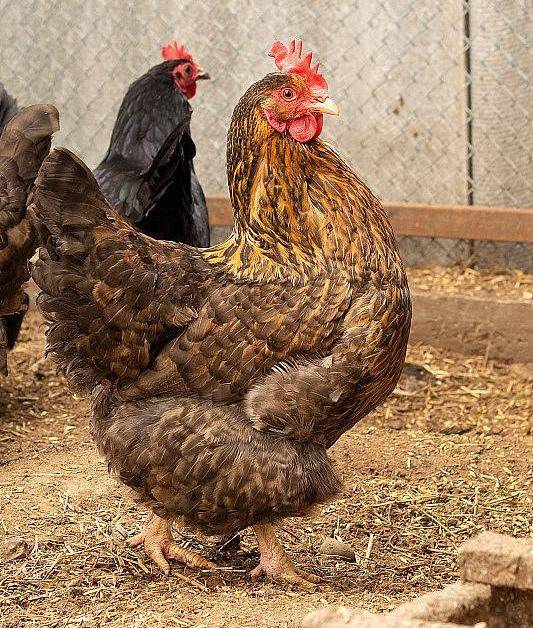
Among the environmental factors affecting poultry production, heat stress is a major challenge in the breeding process. Liu et al. [40] showed that adding 150 mg/kg curcumin to the diet of Hy-Line brown hens under heat stress conditions can significantly increase egg production, egg shell thickness, egg shell strength and egg white height. Nawab et al. [41] showed that curcumin significantly improved the liver weight, white blood cell count and immunoglobulin levels of the curcumin-treated group under heat stress conditions, reduced the content of inflammatory cytokines and the activity of liver enzymes, and enhanced the immunity of laying hens in hot climatic conditions.
In addition, curcumin has also been shown to have a positive effect in quail feeding [42]. Adding curcumin to the feed of Japanese quail can improve egg quality, including higher levels of egg yolk protein, high-density lipoprotein, vitamin A, vitamin B12 and egg white protein, and can reduce the low-density lipoprotein and total fat content of the egg. In addition, it can also improve the carcass content and antioxidant levels of the mother. Therefore, curcumin can improve the immune function of poultry, enhance their resistance to disease, relieve heat stress, and improve production levels.
3.3 Application in ruminants
At present, the application of curcumin in ruminants is relatively rare. Its application in the production of sheep can improve their antioxidant capacity and production levels. Jaguezeski et al. [43] found that after adding curcumin to the diet of lactating ewes, the level of reactive oxygen in the blood of ewes in the test group decreased, the activity of antioxidant enzymes such as superoxide dismutase increased significantly, their milk production increased significantly, The number of somatic cells and protein oxidation in the milk decreased significantly, indicating that adding curcumin to the diet can improve the production performance of sheep and the quality of sheep's milk. Jiang et al. [44] studied the effect of curcumin on the growth of lake sheep in summer. The results showed that the content of free fatty acids, GSH-Px, and IgA and IgM in the serum of lake sheep in the test group supplemented with curcumin was significantly higher, and the testicular organ index, serum testosterone levels, and the mRNA expression of acute-phase regulatory proteins in the testis increased, effectively promoting testicular development.
3.4 Application in other animals
Cervantes-Valencia et al. [45] first reported the application of curcumin as a natural alternative to anticoccidial agents in adult rabbits, and the results showed that curcumin water extract had a positive effect on the excretion of Eimeria oocysts. Curcumin also has a role in improving the growth performance of aquatic animals. For example, in the farming of common fish such as carp and tilapia, the addition of curcumin can not only promote growth and improve feed utilization, but also improve the antioxidant status of the fish, enhance their immune capacity, and increase their resistance to pathogens such as Salmonella [35].
4. Limitations of curcumin application and improvement methods
According to the biopharmaceutics classification system (BCS), curcumin has poor solubility in water and gastrointestinal fluids and limited permeability to the intestinal mucosa, so it can be classified as a low-solubility and low-permeability class 4 drug. In addition, due to the strong intestinal-hepatic metabolism of curcumin in humans and animals, it can be rapidly eliminated from the system. These characteristics result in poor oral bioavailability of curcumin.
Researchers have devoted a great deal of effort to finding ways to overcome the low oral bioavailability of curcumin and have developed a number of new formulations [46]. The first is to administer curcumin together with some plant extract-type adjuvants (such as piperine and resveratrol). When curcumin is administered with these natural compounds, its permeability in cells increases, which in turn promotes its absorption in the intestine and its plasma levels are more stable.
Formulating curcumin as a nanoparticle drug is another way to improve its solubility. Nanodrugs benefit from an increased dissolution rate and higher saturated solubility, which can achieve higher bioavailability. Liposomes are a drug delivery system that contains a phospholipid bilayer structure. Using liposomes as a drug carrier for curcumin can effectively increase the cellular uptake rate of curcumin. Micelles are spherical aggregates formed by surfactants, consisting of a shell formed by hydrophilic head groups and a core formed by hydrophobic tail groups. They can be used to encapsulate and transport drugs with poor water solubility. Many different curcumin micelle systems can improve the stability and solubility of curcumin and increase its oral bioavailability. Using microbial transformation technology to enhance the physiological activity and water solubility of curcumin is also a very promising approach. It is hoped that the above methods will improve the bioavailability of curcumin in animals.
5 Outlook
Curcumin, as a natural green polyphenolic compound, has various important physiological activities such as antioxidant, anti-inflammatory and antibacterial activities, and has broad application prospects in animal health farming. However, due to its poor water solubility, low absorption rate and rapid metabolism, the bioavailability of orally administered curcumin is relatively low. At present, it has not been widely used in livestock and poultry production, and more animal experiments and related products are still needed to improve the application of curcumin in animal production and provide technical references for its application in livestock and poultry production.
Reference:
[ 1] YONG C C, YOON Y, YOO H S, et al. Effect of Lactobacillus fer⁃ mentation on the anti-inflammatory potential of turmeric[J]. Jour⁃ nal of Microbiology and Biotechnology, 2019, 29( 10): 1561-1569.
[2] ROLFE V, MACKONOCHIE M, MILLS S, et al. Turmeric / cur⁃ cumin and health outcomes: a meta-review of systematic reviews [J]. European Journal of Integrative Medicine, 2020, 40: 101252.
[3] KIUCHI F, GOTO Y, SUGIMOTO N, et al. Nematocidal activity of turmeric: synergistic action of curcuminoids[J]. Chemical and Pharmaceutical Bulletin, 1993, 41(9): 1640-1643.
[4] Xiang Xingliang. A study on the differences in curcuminoid components before and after turmeric fermentation based on targeted metabolomics technology [D]. Master's thesis. Wuhan: Hubei University of Chinese Medicine, 2019.
[5] WANG S, PENG X, CUI L, et al. Synthesis of water-soluble cur⁃ cumin derivatives and their inhibition on lysozyme amyloid fibril⁃ lation[J]. Spectrochim Acta Part A- Molecular And Biomolecular Spectroscopy, 2018, 190: 89-95.
[6] Wang Xuemei, Chen Lihua, Shi Wenting. Study on the photostability of curcumin-like compounds [J]. Journal of Anhui University: Natural Science Edition, 2012, 36(3): 73-78.
[7] Zhang Hong, Xiao Dingfu. The physiological functions of curcumin and its application in aquaculture [J]. Feed Research, 2021, 44(5): 133-136.
[8] Qi Lili, Wang Jinbo. Study on the stability of monomeric curcumin [J]. Food Industry Science and Technology, 2007(1): 181-182.
[9] Li Ben, Li Jing, Qian Hai, et al. Research progress on the inhibitory effect and mechanism of curcumin on metal toxicity [J]. Health Research, 2011, 40(3): 399-403.
[ 10] LUO Z, XU X, SHO T, et al. ROS-induced autophagy regulates porcine trophectoderm cell apoptosis, proliferation, and differenti⁃ ation[J]. American Journal of Physiology Cell Physiology, 2019, 316(2): 198-209.
[11] Chen Baojiang. Research progress on the application of plant extracts to relieve oxidative stress in animals [J]. Feed Industry, 2021, 42(10): 1-5.
[12] [ 12] TODA S, MIYASE T, ARICHI H, et al. Natural antioxidants. Ⅲ. antioxidative components isolated from rhizome of curcuma lon⁃ ga L.[J]. Chemical and Pharmaceutical Bulletin, 1985, 44(4): 1725-1728.
[13] Cui Jian, Li Zhaolong, Hong Xiaoyin. Free radical biological antioxidant and disease [J]. Tsinghua University Journal: Natural Science Edition, 2000 (6): 9-12.
[14] REDDY A C P, LOKESH B R. Studies on the inhibitory effects of curcumin and eugenol on the formation of reactive oxygen spe⁃ cies and the oxidation of ferrous iron[J]. Molecular and Cellular Biochemistry, 1994, 137( 1): 1-8.
[ 15] UNNIKRISHNAN M K, RAO M N A. Curcumin inhibits nitro⁃ gen dioxide induced oxidation of hemoglobin[J]. Molecular and Cellular Biochemistry, 1995, 146( 1): 35-37.
[ 16] VAISERMAN A, KOLIADA A, ZAYACHKIVSKA A, et al. Cur⁃ cumin: a therapeutic potential in ageing- related disorders[J]. Pharma Nutrition, 2020, 14:100226.
[ 17] COHLY H H P, TAYLOR A, ANGEL M F, et al. Effect of tur⁃ meric, turmerin and curcumin on H2O2-induced renal epithelial (LLC- PK 1) cell injury[J]. Free Radical Biology and Medicine, 1998, 24( 1): 49-54.
[ 18] MENON V P, SUDHEER A R. Antioxidant and anti-inflammato⁃ ry properties of curcumin[M]. Boston, MA: Springer US, 2007: 105-125.
[19] Guo Zhenhui, Hong Xin. Research progress of IkB kinase [J]. Foreign Medicine, 1999 (2): 94-96.
[20] HASANZADEH S, READ M I, BLAND A R, et al. Curcumin: an inflammasome silencer[J]. Pharmacological Research, 2020, 159: 104921.
[21] SINGH R K, RAI D, YADAV D, et al. Synthesis, antibacterial and antiviral properties of curcumin bioconjugates bearing dipep⁃ tide, fatty acids and folic acid[J]. European Journal of Medicinal Chemistry, 2010, 45(3): 1078-1086.
[22] ZHENG D T, HUANG C X, HUANG H H, et al. Antibacterial mechanism of curcumin: a review[J]. Chemistry & Biodiversity, 2020, 17(8): e2000171.
[23] RUDRAPPA T, BAIS H P. Curcumin, a known phenolic from curcuma longa, attenuates the virulence of pseudomonas aerugi⁃ nosa pao1 in whole plant and animal pathogenicity models[J]. Journal of Agricultural and Food Chemistry, 2008, 56(6): 1955- 1962.
[24] RAI D, SINGH J K, ROY N, et al. Curcumin inhibits FtsZ as⁃ sembly: an attractive mechanism for its antibacterial activity[J]. Biochemical Journal, 2008, 410( 1): 147-155.
[25] MUN S H, JOUNG D K, KIM Y S, et al. Synergistic antibacteri⁃ al effect of curcumin against methicillin-resistant Staphylococcus aureus[J]. Phytomedicine, 2013, 20(8/9): 714-718.
[26] MARATHE S A, SEN M, DASGUPTA I, et al. Differential modu⁃ lation of intracellular survival of cytosolic and vacuolar pathogens by curcumin[J]. Antimicrob Agents Chemother, 2012, 56( 11): 5555-5567.
[27] WANG M, JIANG S, ZHOU L, et al. Potential mechanisms of ac⁃ tion of curcumin for cancer prevention: focus on cellular signal⁃ ing pathways and miRNAs[J]. International Journal of Biological Science, 2019, 15(6): 1200-1214.
[28] ZHANG D W, FU M, GAO S H, et al. Curcumin and diabetes: a systematic review[J]. Evidence-Based Complementary And Alter⁃ native Medicine, 2013, 2013: 636053.
[29] POURBAGHER-SHAHRI A M, FARKHONDEHT, ASHRAFIZA⁃ DEH M, et al. Curcumin and cardiovascular diseases: focus on cellular targets and cascades[J]. Biomedicine and Pharmacothera⁃ py, 2021, 136: 111214.
[30] SALEHI B, CALINA D, DOCEA A O, et al. Curcumin ’s nano⁃ medicine formulations for therapeutic application in neurological diseases[J]. Journal of Clinical Medicine, 2020, 9(2): 430.
[31] Chen Fengming, Chen Jiayi, Peng Wei, et al. Research progress on the mechanism of oxidative stress damage to the pig intestine [J]. Journal of Animal Nutrition, 2018, 30(8): 2887-2893.
[32] MANEEWAN C, YAMAUCHI K, MEKBUNGWAN A, et al. Ef⁃ fect of turmeric (Curcuma longa Linnaeus) on growth performance, nutrient digestibility, hematological values, and intestinal histology in nursery pigs[J]. Journal of Swine Health and Produc⁃ tion, 2012, 20(5): 231-240.
[33] XUN W, SHI L, ZHOU H, et al. Effects of curcumin on growth performance, jejunal mucosal membrane integrity, morphology and immune status in weaned piglets challenged with enterotoxi⁃ genic Escherichia coli[J]. International Immunopharmacol, 2015, 27( 1): 46-52.
[34] RECHARLA N, BALASUBRAMANIAN B, SONG M, et al. Di⁃etary turmeric (Curcuma longa L.) supplementation improves growth performance, short-chain fatty acid production, and mod⁃ ulates bacterial composition of weaned piglets[J]. Journal of Ani⁃ mal Science and Technology, 2021, 63(3): 575-592.
[35] MONIRUZZAMAN M, MIN T. Curcumin, curcumin nanoparti⁃ cles and curcumin nanospheres: a review on their pharmacodynamics based on monogastric farm animal, poultry and fish nutri⁃ tion[J]. Pharmaceutics, 2020, 12(5): 447.
[36] Yu Jianguo, Zhou Li. Effect of curcumin on the cellular immune effect of porcine circovirus inactivated vaccine [J]. Chinese Journal of Animal Infectious Diseases, 2017, 25(5): 60-63.
[37] Zhao Chunping, Xun Wenjuan, Hou Guanyu, et al. Effect of curcumin on growth performance and antioxidant capacity of piglets challenged with Escherichia coli [J]. Journal of Animal Ecology, 2015, 36(7): 24-27.
[38] LEE S H, LILLEHOJ H S, JANG S I, et al. Dietary supplementa⁃ tion of young broiler chickens with capsicum and turmeric oleo⁃ resins increases resistance to necrotic enteritis[J]. British Journal of Nutrition, 2013, 110(5): 840-847.
[39] HUSSEIN S N. Effect of turmeric (Curcuma longa) powder on growth performance, carcass traits, meat quality, and serum biochemical parameters in broilers[J]. Journal of Advanced Biomedi⁃ cal & Pathobiology Research, 2013, 3(2): 25-32.
[40] LIU M, LU Y, GAO P, et al. Effect of curcumin on laying perfor⁃ mance, egg quality, endocrine hormones, and immune activity in heat-stressed hens[J]. Poultry Science, 2020, 99(4): 2196-2202.
[41] NAWAB A, TANG S, LI G, et al. Dietary curcumin supplementa⁃ tion effects on blood immunological profile and liver enzymatic activity of laying hens after exposure to high temperature condi⁃ tions[J]. Journal of Thermal Biology, 2020, 90: 102573.
[42] MARCHIORI M S, OLIVEIRA R C, SOUZA C F, et al. Curcum⁃ in in the diet of quail in cold stress improves performance and egg quality[J]. Animal Feed Science and Technology, 2019, 254: 114192.
[43] JAGUEZESKI A M, PERIN G, BOTTARI N B, et al. Addition of curcumin to the diet of dairy sheep improves health, perfor⁃ mance and milk quality[J]. Animal Feed Science and Technolo⁃ gy, 2018, 246: 144-157.
[44] JIANG Z, WAN Y, LI P, et al. Effect of curcumin supplement in summer diet on blood metabolites, antioxidant status, immune re⁃ sponse, and testicular gene expression in hu sheep[J]. Animals (Basel), 2019, 9( 10): 720.
[45] CERVANTES- VALENCIA M E, ALCALA- CANTO Y, SALEM A Z M, et al. Influence of curcumin (Curcuma longa) as a natu⁃ ral anticoccidial alternative in adult rabbits: first results[J]. Ital⁃ ian Journal of Animal Science, 2016, 14(3): 3838.
[46] LIU Z, SMART J D, PANNALA A S. Recent developments in formulation design for improving oral bioavailability of curcumin: A review[J]. Journal of Drug Delivery Science and Technology,2020, 60: 102082.


 English
English French
French Spanish
Spanish Russian
Russian Korean
Korean Japanese
Japanese